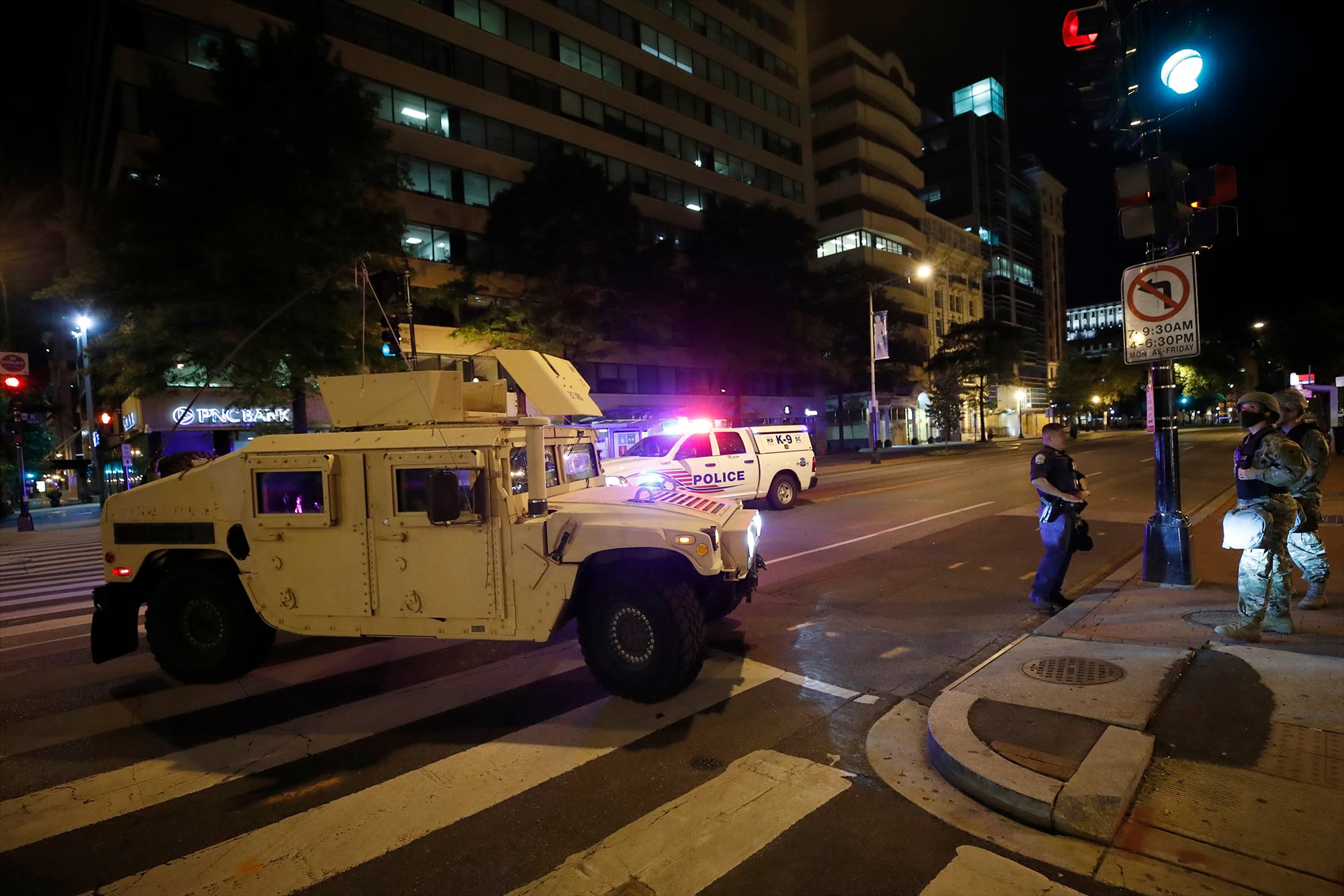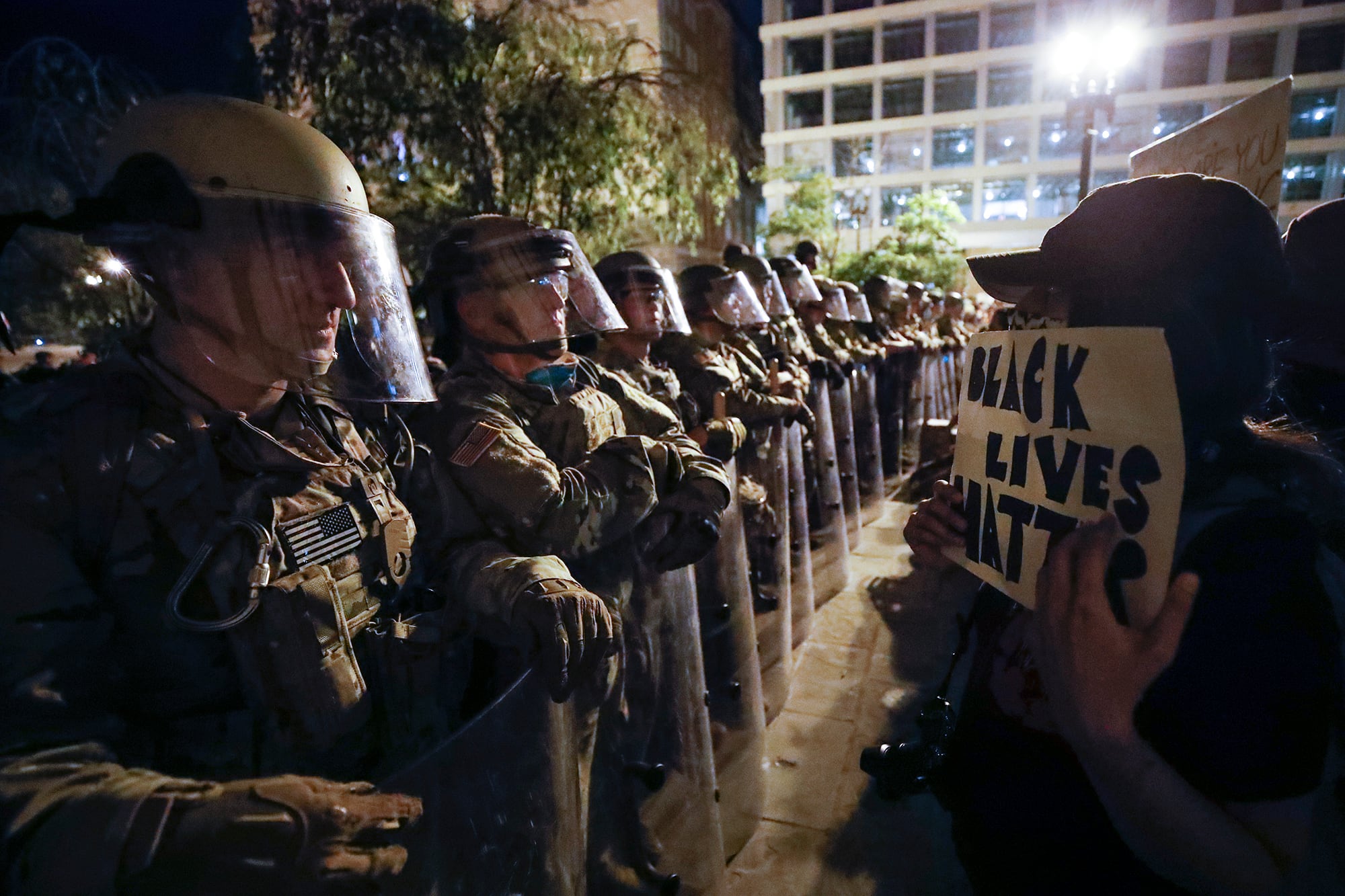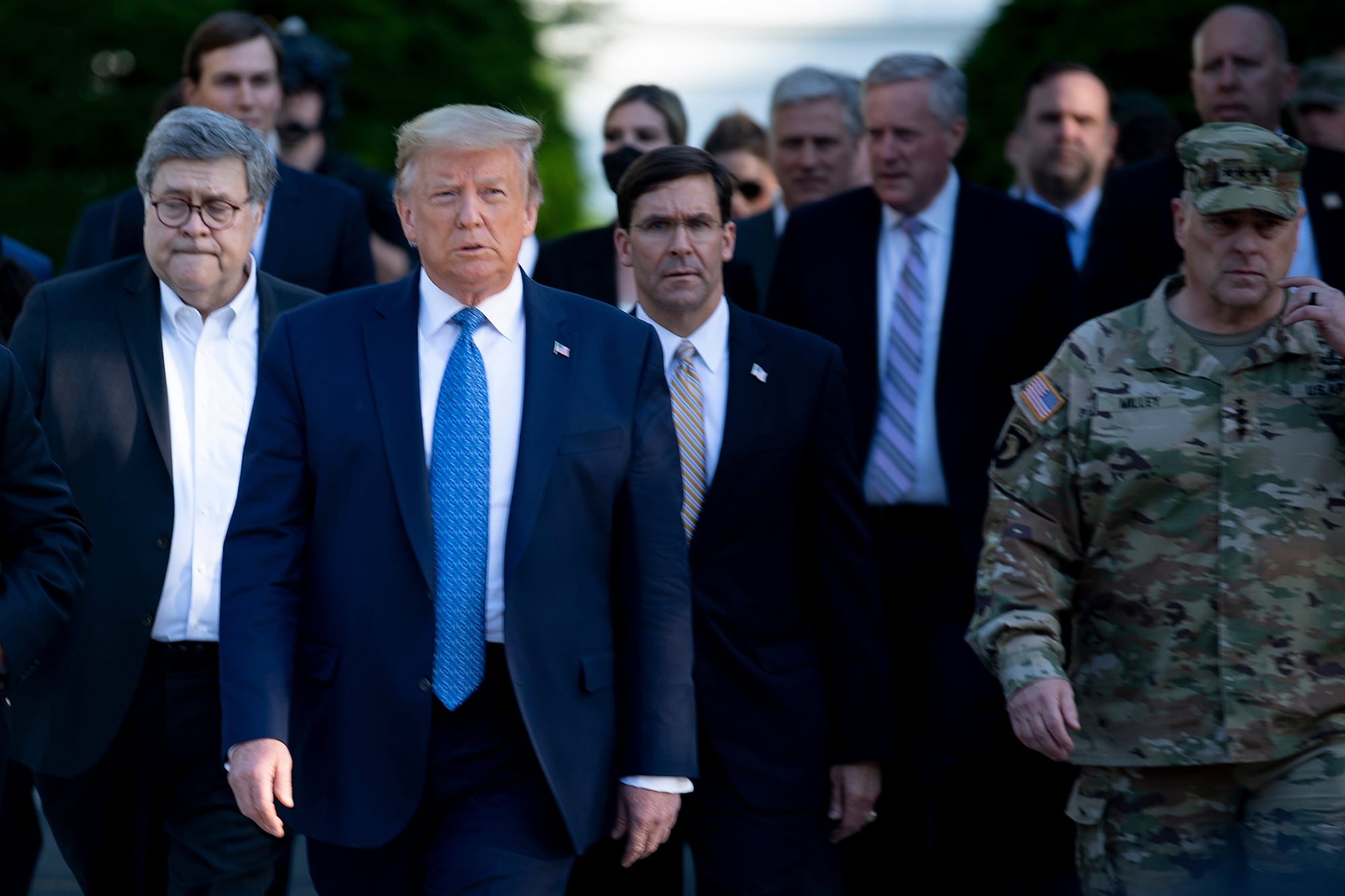Active-duty troops should be used only as a last resort in direct civilian law enforcement roles.
Police should wear distinct uniform colors during protests when the military is present.
And troops should be careful about lending out equipment to law enforcement with the word “military” to avoid confusing civilians.
Those are some of the lessons the nation’s top military’s top civilian and uniformed leaders offered to Congress as the explained the DoD’s role in the civil unrest that followed in the wake of what prosecutors say was the murder of a Black man, George Floyd, by a white Minneapolis police officer.
Among other issues they addressed Thursday afternoon during a House Armed Services Committee hearing, Defense Secretary Mark Esper and Joint Chiefs Chairman Army Gen. Mark Milley tried to clarify the armed forces’ role in support law enforcement amid nationwide protest, particularly the confrontations outside the White House in early June.
Tens of thousands of troops were mobilized around the country to help with crowd control, including thousands from 11 states sent into the District of Columbia, and another 1,700 active-duty troops who were staged in Maryland and Virginia in case of emergency.
“Using active-duty forces in a direct civilian law enforcement role should remain a last resort, and exercised only in the most urgent and dire of situations,” Esper said in his prepared statement, echoing a similar statement he made in a June 3 Pentagon briefing, two days after he accompanied the president for a much-criticized photo op outside the White House.
Committee chairman Rep. Adam Smith, D-Wash., stressed that he understood how fraught their testimony would be, but that he would try to suss out the truth of the situation without creating a political firestorm.
“Now, it is absolutely impossible that anyone in either of your positions would agree 100 percent of the time with everything the president said,” Smith said. “How do you handle those disagreements?”
Though his question was rhetorical, Smith alluded to perceived tension between the White House and Defense Department, as the president threatened to invoke the Insurrection Act to beat back protesters, while military officials stressed that troops were only acting in a support capacity, mostly unarmed.
“Admittedly, you can’t come out in public and say, ‘Yeah, I think my boss is an idiot. I completely disagree with his decision.‘ That’s not the way it works, and I’m not looking for that,” Smith said, adding that he hoped for more understanding about how the White House and DoD coordinate policy and messaging in situations like this.
RELATED

In his opening remarks, Milley specifically clarified one of Trump’s comments.
“He hates to see the way it’s being handled in the various states. And I’ve just put him in charge,” the president said of Milley during a June 1 phone call with governors, specifically speaking to their local National Guard responses.
As Joint Chiefs chairman, Milley is an adviser, rather than a commander of troops.
“Throughout the recent period of civil unrest, I exercised this role exclusively,” he said. “At no time was I ever in command of any forces. All of my actions have been consistent with my status as an adviser, who is explicitly not in the chain of command.”
Milley shared that he had recommended to Esper to mobilize those 1,700 active troops, both military police officers and members of an 82nd Airborne quick response force, to the D.C. area ― though he added that he did not feel they would be necessary.
Esper and Milley also shared lessons learned from that protest support.
For example, Milley said, civilian law enforcement sent to D.C., dressed in green, were confusing to the general public, who assumed that those personnel were members of the military. He suggested that in those situations, civilian officers might stick to black or blue to avoid any misunderstanding.
Esper, similarly, drew a lesson learned from cooperation between National Guard members and local law enforcement. Guardsmen lent their riot shields to local police, he said, which were emblazoned with “MILITARY POLICE.”
In the future, he suggested, they should come up with a way to cover up the “military” portion, to clarify who is using them.
And in their statements, both offered their support for the spirit of the protests.
“As the American people continue to express their outrage at the killing of Mr. Floyd, and long for change, we once again face the painful truth that racism is real in America,” Esper said. “We also know that the Department of Defense is not immune to the forces of bias and prejudice — whether seen or unseen, deliberate or unintentional.”
RELATED

In the wake of protests, Esper stood up a task force at DoD who will come up with ideas for policies that can improve the military’s handling of racial tension.
“I have many policemen in my family, and I am outraged by George Floyd’s brutal and senseless killing,” Milley said. “The protests that have ensued not only speak to this injustice, but also to centuries of injustice toward black Americans. We as a nation, and as a military, are still struggling with racism. And we have much work to do.”
Meghann Myers is the Pentagon bureau chief at Military Times. She covers operations, policy, personnel, leadership and other issues affecting service members.





